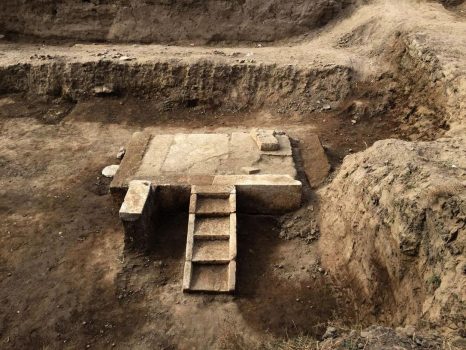
An archaeological mission in Egypt has uncovered parts of a celebration compartment belonging to ancient Egyptian King, Ramses II in the Matariya neighbourhood of Cairo, the country’s capital.
According to a statement issued by the Egyptian Ministry of Antiquities on Thursday, the royal compartment consists of four steps leading to a cubic platform believed to be the base of the king’s seat during celebrations or public gatherings.
The statement added that the excavation mission also unearthed a collection of scarabs, amulets, clay pots and blocks engraved with hieroglyphic texts.
King Ramses II, known as ‘Ramses the Great’ due to his several military expeditions that expanded ancient Egypt to reach present-day Syria and Sudan was one of the longest ruling pharaohs in ancient Egypt. He ruled the country for 66 years about 3,000 years ago.
Mamdouh al-Damaty, a former Antiquities Minister and Head of Ain Shams University’s archaeological mission said the compartment was used for the celebration to mark the king’s inauguration anniversary.
“The structure was probably used in celebrations and for public gatherings, and it dates back to the 19th Dynasty,” Mamdouh al-Damaty said.
“The discovery is important because it is a unique shrine from the New Kingdom that was used for the ‘Heb Sed’ festival, not only during the reign of King Ramses II but throughout the Ramesside period,” he added.
Over the past couple of years, Egypt has witnessed several big archaeological discoveries including pharaonic tombs, statues, coffins, mummies, burial sites, funerary gardens, Greco-Roman relics as well as other artefacts.
In March last year, an Egyptian-German mission discovered a pharaonic statue also in Matariya district which was believed to be that of Ramses II, but the Antiquities Ministry later said it might be that of King Psamtik I of the 26th Dynasty.

Biden Administration Imposes New Sanctions On Iran Following Attack On Israel
Israel’s European Allies Urge Restraint Amid Escalating Tensions With Iran
Israel Prepares For Possible Attack From Iran As Tensions Escalate
Senegal’s President Bassirou Appoints Ousmane Sonko As New Prime Minister